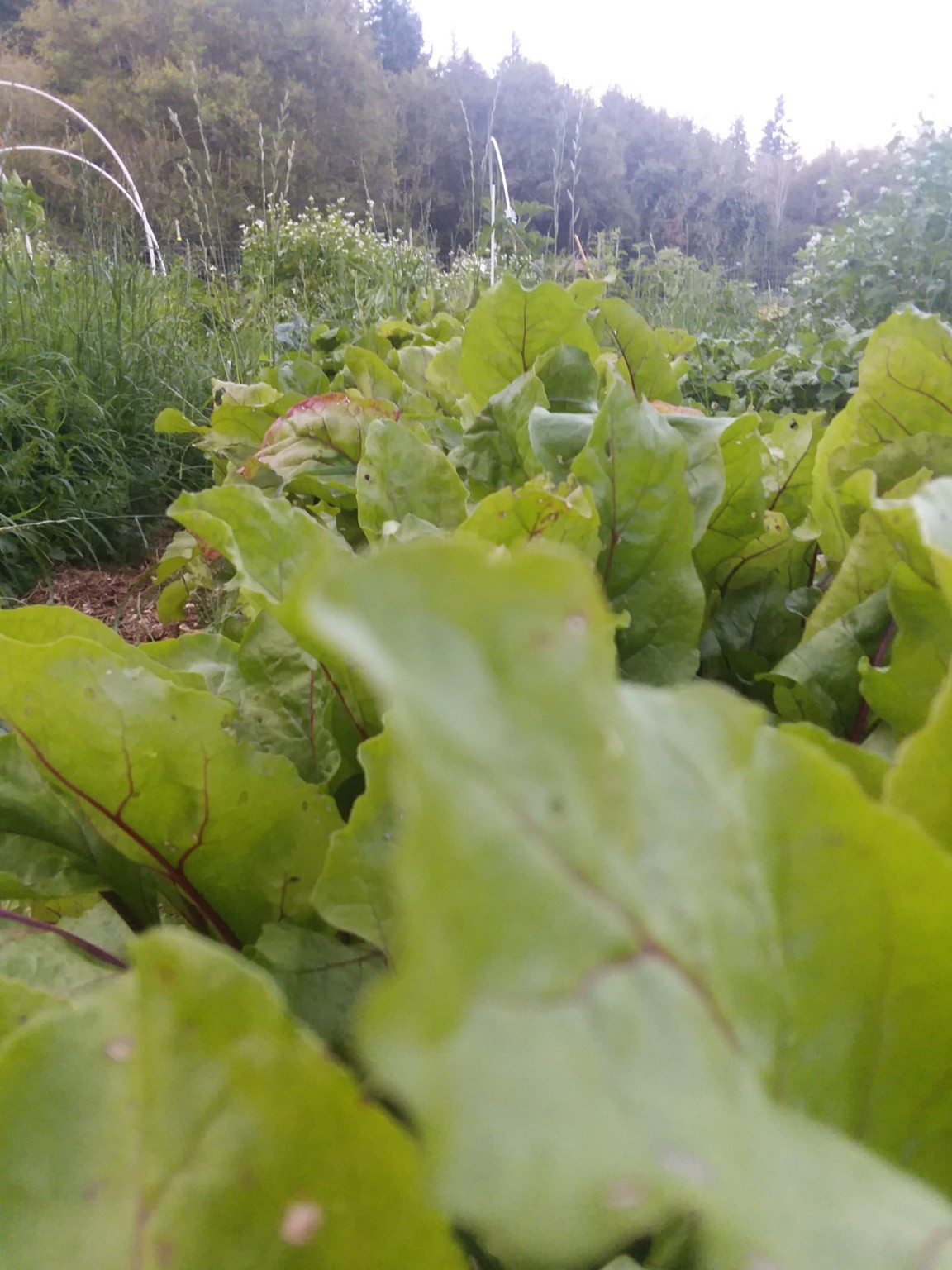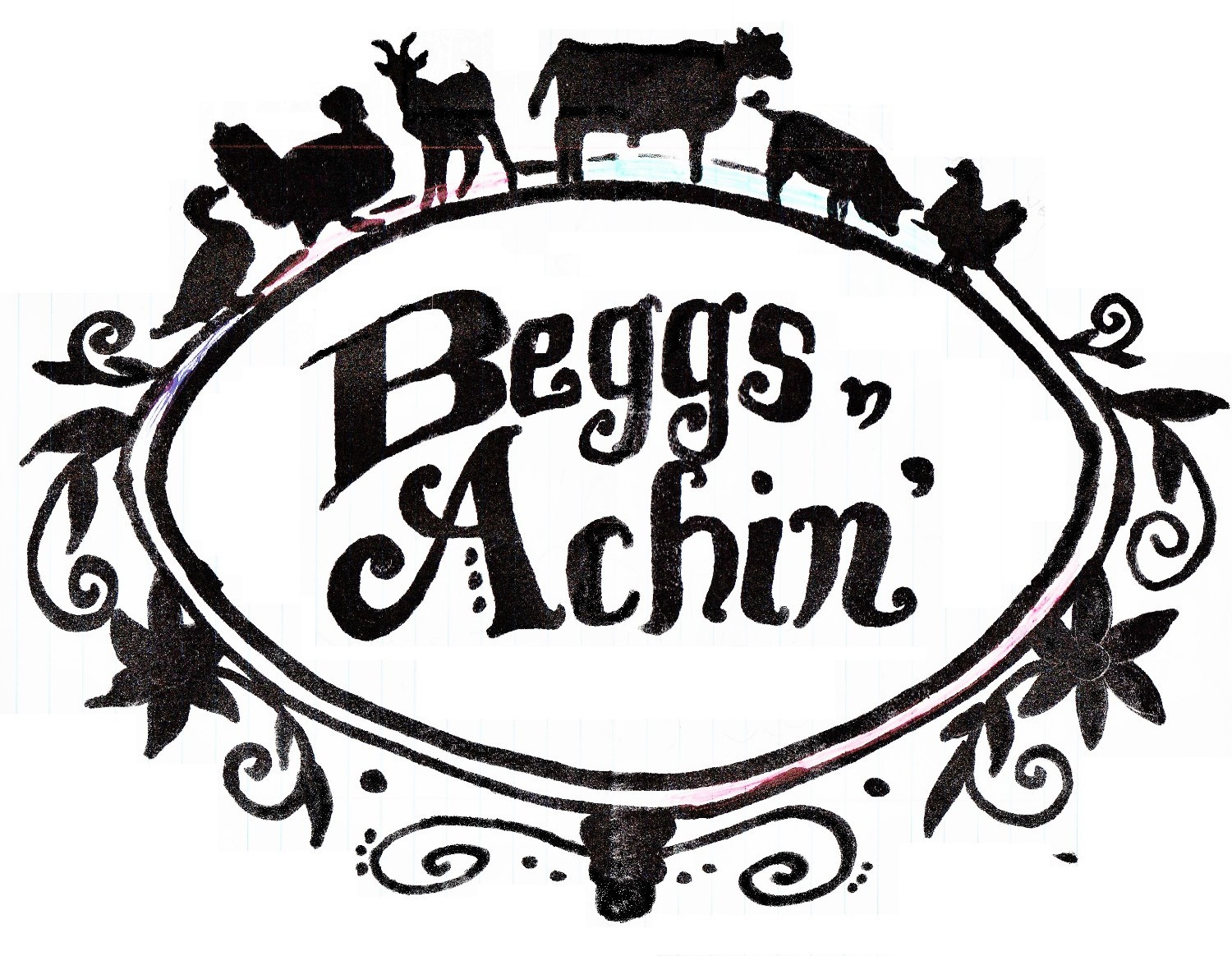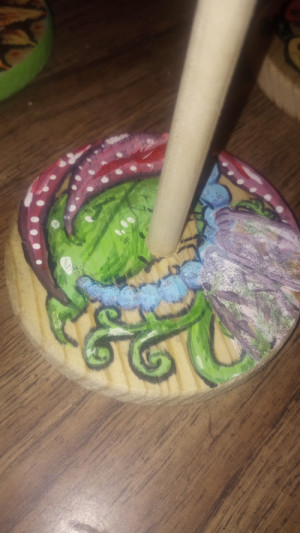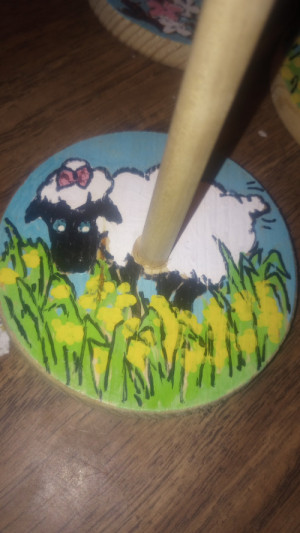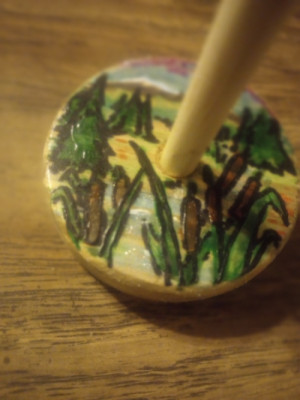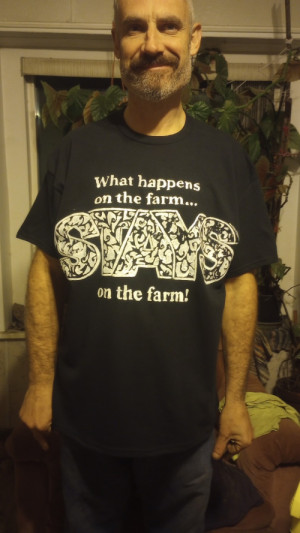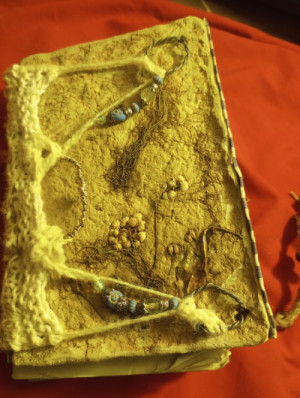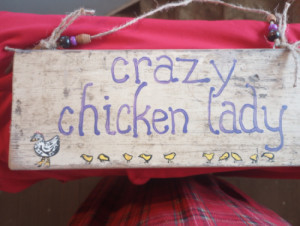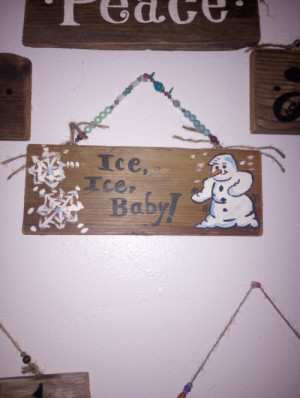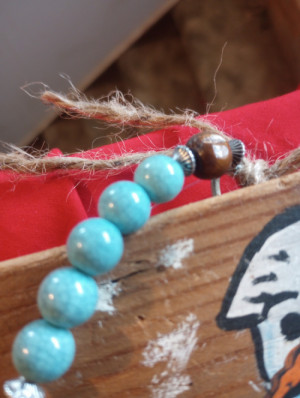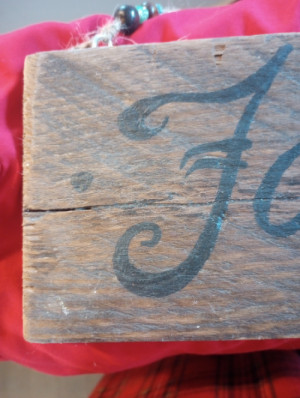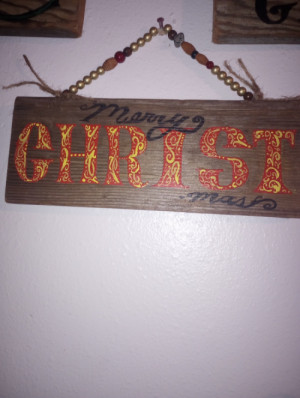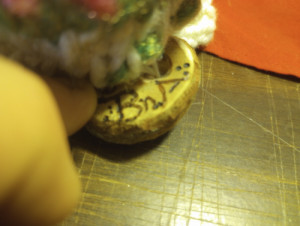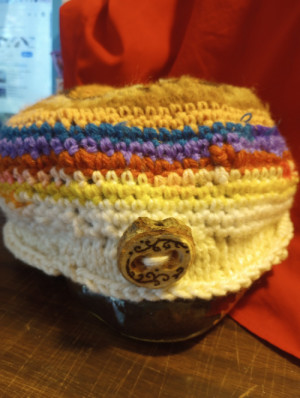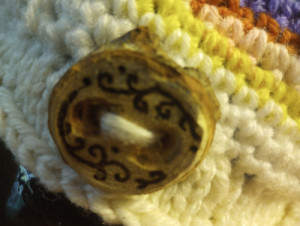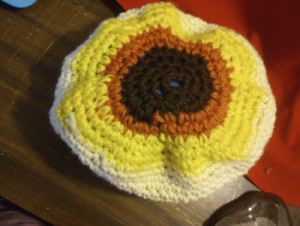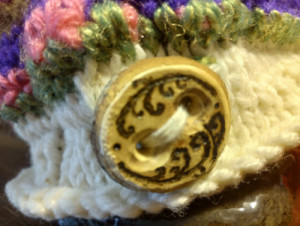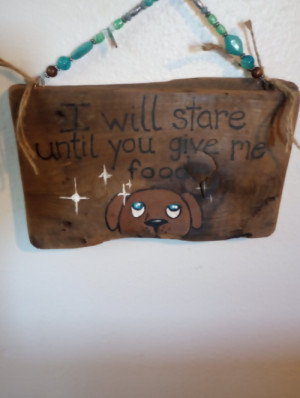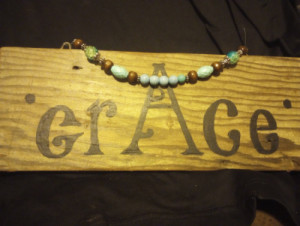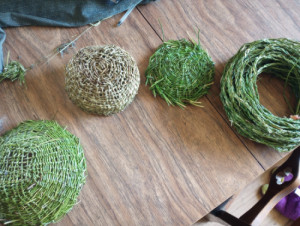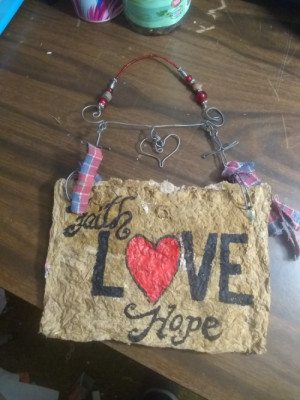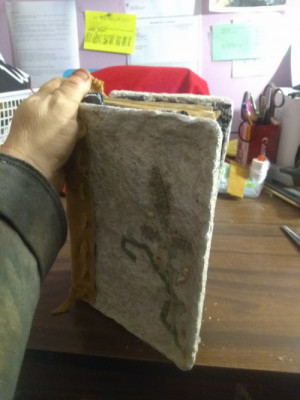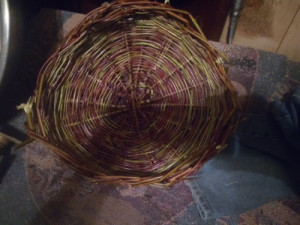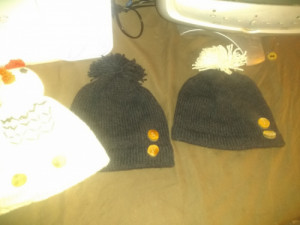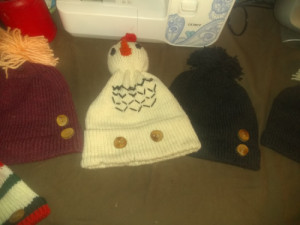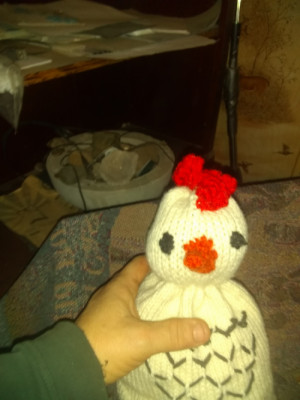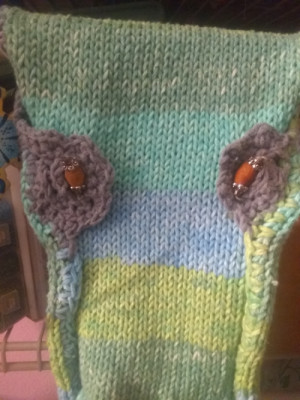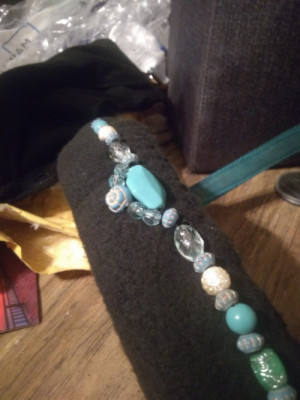No more little pigs (AGH/KK) are available as of January 2023.
We phased them out last year in favor of a mix of the big/little cross.
Also, we severely downsized in Fall of 2022 and are regrouping the
whole mini farm in generaL We only produce what we eat, and no more pigs.
I left this page up in case it might help someone else that wasnts
to do that venture.
"LITTLE PIG" FAQ PAGE
---So, first off, what do I mean by "little pig"?
For the sake of not having to say a mouthful:
>Little Pig = American Guinea Hog crossed with Kune Kune. They aren't going to get the size of traditional, large, market hogs (more below). That's what this page addresses. Click blue button above for "big/littles" info.
>Big/Little Pig = American Guinea Hog/Kune Kune crossed with Hampshire, Yorkshire and Duroc. "Big" crossed with "little. Not covered on this page. The "baby daddy" is the same, however for both crosses... that's "Little Pig" (that's his name, Little Pig), pictured over on the right. Are you confused yet? LOL
"Little"Pig FAQs-
Folks have had a lot of questions, about the AGH/Kune Kune cross breed of pigs,
what they eat, etc. I will attempt to cover all that here,
and add to this page with more questions, as needed.
Also, my Youtube Channel has a playlist just all about pigs, that will give you an idea what they look like, how big they get, their housing arrangements.
In addition to questions asked of me, Google has a LOT more info than I do.
Google search for "AGH Pigs" - https://www.google.com/search?q=agh+pigs&rlz=1C1CHBF_enUS864US864&oq=AGH+pigs&aqs=chrome.0.0l2.5037j0j7&sourceid=chrome&ie=UTF-8
Google search for "Kune Kune Pigs"
--How big do they get?
They can get 150- 200 lbs in 2 years. That being said, they make a lot of lard getting that big. We have found 3 inches or more layer of lard on a pig that old. And it tasted gamey, even though it was a barrow (castrated). Grass fed and age probably had something to do with it. We process much younger at 7 months to a year. It makes a smaller, slightly bigger than a "roaster". We fed 40 people at a bbq with a 7 month old. Smaller pig, geared toward home processing, cheaper feed bill bc they go to fat more easily. When we get a scale or I can get a tape around one of the wiggly things, I will have more info on that age. For a homesteading outlook, we use the lard for salves, soap, fry food in a pan, seasoning cast iron skillets, I put it on hubs' boots sometimes, tool lubricant, dog food ingredient, chick food in winter, you name it.
Video of Littles, size comparison with Big pigs, getting an approximate size by tape---------------------------------------->
This channel has several videos of the "littles" at various ages. Check it out. It will give you an idea. Bear in mind that I didn't get an actual livestock scale until Feb 2020. But don't worry, I'll be adding more to this page and the blog as I process piggies and film it, and get a an exact weight on meat output vs weight of the pig, age, etc. I've also got some weights on the littles in this video that is geared toward the big/littles (they were in the same stall) https://youtu.be/iUmnh-m6yRk
--Are they those cute little micro pigs?
No. Just, no. If you want to make them a pet, be my guest, but don't tell me, and don't dump them off when they get huge and try to eat your livingroom. While they are the size of a pop can with legs as babies, please see number 1. There is a someone here in the area that does cute little pet pigs, and they cost quite a bit more, and they have apparently, a lot more vet care, bc they are deliberately kept small. So, go buy a pet pig there. Be prepared to house them in such a way to prepare for the strength of a 400 lb pig, bc while they are small, they still root, chew, destroy things, and they get monstrously huge if you overfeed them. I have seen this with potbellies, Julianna... any small pig. They are still pigs and they still get big. Oh- and that picture over to the right, here, with the cute little spotted pig boinking that big fat pig? That big fat pig isn't a female, male pigs boink EVERYTHING, including you, your couch, your dog... and the females? Go into heat like once a month and get SUPER crabby when you, their faithful owner, doesn't provide them with woopie. So... "cute little pet pigs" 100+ lbs of attitude, boinking and gnawing on your furniture. That big fat black pig right there, is Wilbur, someone's "cute little pet pig" that got abandoned when he wasn't so cute and little anymore. Bear that in mind, folks.
Also, people claim that the pigs "can stay small with proper feeding". It is my understanding that that is STARVING them to death. We try to be humane here. That's not what I'm going to support. I just won't have any part of it. Their organs still grow inside their tiny, malnourished bodies, and they die a slow, painful death. Also, inbreeding is part of the equation, to keep them small, to facilitate desired qualities. While "inbreeding" and "linebreeding" can be a part of making the desired pig you want... refer to the large organs... and the more inbreeding you get, the more health problems, small litter size, behavior problems you get.
If you're going to do a "pet" pig, please don't do that through me. So many people come to me wanting a $75 dollar "pet pig", and don't want to pay $500 for one, but the people that do that have a LOT more things that are done vet-wise, and quite frankly, they need it. Go for it, if you want a pet pig. Just please don't buy that from me. We raise humanely here and we dispatch humanely.
--What do they eat?
I think I covered this on the other pig pages, but I will cover it again bc I get asked it a lot. The short answer? Anything they can. In addition to hay and grain, our pigs get all the grass and shrubbery they can find, stray eggs the chickens didn't hide well enough, rotten eggs the chickens abandoned. Anything from the kitchen except pork. If a raccoon has taken one of my chickens and left the body, I will come out in the morning and find only a wing left. Betcha can't guess who ate the rest of it? I had a duck that flew into the pen and couldn't get out and I found only a wing. The chickens will sleep peacefully on the pigs' backs, too. So that may be a rarity.
My pigs LOVE goat milk, so much so that one of them started following the goat around, looking for more. The goat was not amused and we seperated them. The pigs have also chowed down, which totally grossed me out, on fresh cow piles, looking for undigested grain in that stuff, following Betsy around, waiting for new cow pies. Pigs can be gross. They will eat literally anything and probably do just fine.
We feed our pigs Excel brand Barnyard Buffet, which is kind of a cob mix (corn, oats, barley, etc.), an all purpose livestock feed. That being said, we only feed the pregnant and nursing mamas, and the little growers that, and when they are not doing these things, they get just a little handful of grain once a day or so to keep them coming. If they get out, I can shake the grain bucket and they come running and go right back in. They do very well on forage. We feed a horse quality hay right now, and one of my nursing mamas with five piglets is actually fat. The weather, and how they are housed will affect how much they eat, as well. Wintertime, they eat more. Summertime, they eat more grass.
These guys go to fat VERY easily. They don't need but maybe a cup of grain per day, per pig. That's why those little "pet" pigs turn into giant, obese, monsters. Because people feed them "hog" ration, which is designed to make those large market hogs get to 275 lbs in six months. Little pigs grow slower, and they eat a LOT less rich food. Judge them by their body condition (fat butts vs angular butts and spine) and feed accordingly. Little growing piglets will eat more, and nursing mamas will pack away the feed like gangbusters. Don't be stingy with a nursing mama.
--Do they dig holes?
See my Youtube channel above. My field turns into a mud mess in the rainy months. They still root up the field, like big pigs do, but only in one area in summer, and to make a mud wallow. Normally, in the field after a rain, they will dig up anything tasty, So far, I have housed big pigs in my field, and little pigs in my field, and both at the same time. I have not seen a difference in the rooting depth or amount of rooting, to be quite honest. People will tell you these little pigs don't root. I have heard from Idaho Pastured Pig folks that they root because they need minerals? I don't know anything about that. Mine root. In 10 years, I haven't seen them not... root. They adore turning over their water barrels (a constant battle we fight all year round. lol) and playing in the mud. Especially right after I've filled them. If it just rained, they will root all over. They will graze, and they will root. Don't let anybody tell you they won't, I haven't seen it.
They will root for every last scrap of grain, or mushrooms, or tasty roots they smell from up above. This makes them good compost turners and garden tillers. They will graze on grass first, and only root very badly when the grass is all gone, so the trick is to keep them rotating, or feed them well. Or use that little rototiller nose where you want dirt dug up in a confined area. I use them in my garden, to flatten hillsides a little bit, and in deep litter in the barn to build compost. They dig in my field, but then they flatten it out again in Spring. I don't worry about it, it recovers.
-- What kind of housing do they need?
Pigs need to be dry, out of the wind, and have a good hay bed. That can mean a lot of things. There is a guy way more experienced than me in Vermont winters that houses his pigs in a 3 sided open shed with a deep hay bed. Sugar Mountain Farms, he raises big pigs. I learn a lot from him and Joel Salatin Polyface Farms.
Pigs are pretty versatile. The concern with them is to keep them from escaping and also avoid parasites in an organic setting. I don't use chemicals as much as possible, so my pigs move a lot, so they aren't eating parasites they may poop out, to break the parasite cycle. Some folks have used that netting. We haven't had good success with that, as they figured out there was chicken food inside that netting and blew right through it and destroyed it. In the field, Some of our pigs are bedding down in my truck camper on the ground. Another place, hubs built a pallet lean to barn for the goats, that the pigs also share. In another place, the little guys are sleeping in a pallet enclosure topped with a hoop house. All they need is a place to be dry, get out of the wind in a deep bedding of hay to burrow in, and have a buddy to keep warm with. The mamas that are nursing, I try to keep in a barn in the winter, simply bc piglets will nurse the mamas down to absolutely skin and bones, if they can. Animals burn a lot of calories in winter staying warm, and with piglets stealing those calories, that can be death for the mama. Pneumonia hits QUICK.
Fencing for us has been two inch woven wire fencing, with a hot wire of 4,000 volts at the bottom, with them being "trained" to the hotwire so they don't figure out they can take the hit and get out. Little piglets are super good at slipping under and/or burrowing under fencing, and do so gleefully. In a barn setting, we have used a pallet enclosure with the same fencing scraps stapled on (think... little piggy heads stuck in pallet), with a hoop house over top, or in a barn stall seperated with short hog panel. We cut a "creep feeder" hole in the hog panel, so piglets can sneak out for an extra meal from us and give mama a break, facilitating easy catching for later- you just lay down grain, wait for them to come in, and plug the hole. Done.
--Vet care?
Entirely up to you. We don't do much with these guys because we haven't had to. Our first winter here in Chehalis, we found a mama one morning in her water trough in the snow, We brought her in, nursed her for 4 days under vet care syringe feeding her, but it was already too late. The vet wound up putting her down because she wasn't going to pull out of it. Included in that care was injectable antibiotics and electrolytes. I think for that incident, we paid, I want to say $100 for the office visit to Cascade Vetrinary Clinic in Chehalis, plus I think $40 to put her down by injection, because that was the most humane option. She was a nursing mama that gave all of her calories to her babies, plus that was a colder winter. She got pneumonia and it hit QUICK. Sometimes it happens. Which is why we make every effort to farrow in the barn or an enclosed shelter for a lot of reasons, and also use deep litter for the compost heat. It works a lot better. Also, don't be stingy with the feed with a nursing mother. They will lose weight fast with babies sucking all of their fat and calories out of them.
Under normal circumstances, we don't even castrate, or clip needle teeth. We have not done that in 8 years with the little pigs because it hasn't been necessary, and if it isn't necessary, it doesn't fit into our goal of trying to be humane.
Hoof trimming for the pigs for us, involves some kind of sedative (beer. They like beer), and a metal file, maybe some horse nippers. Our boar Little Pig is pretty mellow and he just lays over for a belly rub. So as long as somebody is rubbing his belly, he pretty well sets still to get his nails filed. But we got off easy with this property. It is all clay that turns to almost concrete in Summer. We put the pigs up on a slope in summer, and the clay wears down their hooves quite nicely and we don't have to deal with that. Sugar Mountain Farms mentions pouring a rough concrete patch around their water or feed troughs and the pigs wear down their own hooves, as well.
We don't give iron shots to piglets bc they get their iron on the ground, living outside, not on cement. Pigs on dirt get their iron. Every October all the animals around here get as much fresh pumpkin as they want, and this has said to be a natural wormer. We haven't seen evidence of worms in 8 years of having pigs. The 8th year, we wormed, when we saw one, and moved the animals (they had been on that ground too long) to break the parasite cycle. Joel Salatin speaks about this in his books and videos.
--Why don't you castrate?
We did. Once. Tryin' to make people happy that balked about uncastrated boars. Won't ever do it again.
.
We will see about the larger breed pigs, as we have read that AGH don't have the boar taint, and hope that transfers over. Taste test for that will happen in Fall 2020 when our first little pig/big pig mix goes to butcher.
We have processed and eaten an intact boar, a sow, and a barrow. We noticed no taste difference in any of them. These guys, being grass fed, have a fuller, more robust, some even say slightly gamey (think the taste of venison vs the taste of beef from the store) taste, as compared to the store bought version. Also, the meat itself is a deep red like beef when processed, whereas confined and grain fed pork is pale. We find the meat to be denser, and we get fuller faster on a smaller portion of this meat, in comparison to the store pale stuff.
So, in the spirit of being humane to our food animals, we do not subject them to castration because there is no need to so far.
Castration for piglets involves one person holding the piglet while the other person slices open the scrotum and either cutting off the testicle after popping it out of the hole, or RIPPING it out. Both of these things, when we performed them, made the little piglet jerk and scream. We even took one to the vet and learned how, after watching Youtube videos for a few YEARS. The vet did not use anesthetic and stated that to do so that way would cost a couple hundred dollars. That would drive the price of pork and piglets way up out of what consumers want to pay and also drive the costs of operating above what we can maintain. There has to be a balance, and if there's no boar taint, we won't do it. I think we got lucky with these little pigs. I have read that AGH pigs don't have boar taint. There is considerable debate about this subject. At the very least, there's sausage. But as I said, in 8-10 years... haven't had a bad boar yet.
We won't be doing this castration again. The jury is still out on the big/littles. That's a work in progress. We did 10 little piglets in the bathroom, it was a screaming, awful blood bath. We even tried to sedate them with beer (vet said that's common) and those little guys weren't having it. Hubs got the beer instead, one for each piglet. After the 11th piglet he'd finally had enough and was very nervous about my wielding of that scalpel near his man-parts (he was "holder"). The last piglet wiggled and I nicked an intestine badly... he had to be put down. NO. MORE. CASTRATING. NO. For people freaking out, please read above about where we went to the vet, first and were taught how to do this.
We have detected no boar taint in these little pigs, that we know of, nor have any of the the 40+ people that have eaten our boar meat. I'm not saying it's not there. I'm just saying it hasn't been detected. For further information about boar taint, Sugar Mountain Farms has an interesting article about where it comes from and how he bred it out. Link below in next question.
--What about boar taint?
Welp, see above, and... here is a fellow of Sugar Mountain Farm, Vermont that has been breeding large breed pigs for... what, some 15 years or so? Does not castrate. Wrote a very informative article about why he doesn't castrate, what causes boar taint, etc.
http://sugarmtnfarm.com/2007/08/12/hi-tech-vs-boar-taint/
--How are they processed?
As humanely as possible. Eligible candidates are isolated in the field/stall, if we CAN (they don't always cooperate) in as peaceful, calm manner as possible. It is important to keep one's emotions calm, bc we both hate this part, Pigs smell your intent, so you think nice thoughts about how cute they are. Pet them. You have pity for them. No adrenaline or stress. Calm human equals calm pig. A freaked out pig isn't gonna be a humane dispatch experience, and it also makes the meat taste wierd when there is adrenaline in them at the time of dispatch. We always pray and ask God to make it a clean, humane kill so the animal doesn't suffer.
Here is a video filming about 2/3 of the process of processing a big sow:----------------------------------------------------------------->
And here is a video (less informative, but has useful info) where the kids came and did an AGH/KK "little" sow... very fatty because she was mean and had to stay in a stall until butcher day. We cull hard for temperment traits. I don't like getting chewed on. ------>
A bit of grain is dropped down in front of them, and when they are good and into their grub, a bullet is placed right between the eyes and slightly above, pointing down. We have used a 9 mm handgun (my preference) on the little pigs, and a 30/30 on a big breed sow. Then they are bled out by slicing the jugular. There is some thrashing, but not much if it is done right. We always double tap, just in case because we have had a sow jump back up and chase us (shot from far away, not ideal and VERY dangerous). The body muscles don't know that the brain is already dead. The last thought that goes through the pig's brain is "oh look, food".
Then, because we process for only us, we hang and skin them, quarter, and age the meat in a refridgerator we set aside just for that. Or, we cut and wrap at that time. Depends on space constraints and weather. Then we process that into all of the meat cuts. We aren't experts by any means. These guys, Bearded Butcher guys, are. Video of them processing pork at home, VERY informative. ----------------------------------------------------------->
We render the fat and store it in jars, which is then used for cooking, pie crust, salves... chicken seed balls... you name it. The dog and the cats get the organs, some of which are fed immediately and some frozen for later. For other folks that will be buying grown out pigs we are obligated by law to have a mobile slaughter come process the pigs and deliver to the butcher, at which the customer picks up from there. We have no control over what the butcher is required to put on or in the meat by law. So unless you pick it up live and take it home (we have some customers that do that with roaster pig "littles" that come clear down from Seattle area to Chehalis)... that's what we are limited to. Contact your law makers. I'd like to see that change.
So far for our cows, we have used Finns Custom Meats out of Onalaska and A & L Mobile Slaughter. We have been very pleased with these folks.
--Why is there a price difference in Winter or Spring?
******NOTE THAT DURING THE DURATION OF THE COVID CRISIS, ALL AGH/KK PIGLETS ARE GOING TO STAY AT THE PRICE OF $75 EACH FIRM, REGARDLESS OF HOW MUCH MORE THEY ARE ELSEWHERE. UNLESS FEED PRICES JUST GO CRAZY. WE WANT TO FOSTER FOOD INDEPENDENCE AND SELF SUFFICIENCY. NO, I WON'T SELL A BUNCH AT THAT PRICE SO YOU CAN GO PRICE GOUGE SOMEONE ELSE. SEE ABOVE****
It's all feed costs, really, and is the case with all livestock. In winter, an animal consumes more feed staying warm, so we spend more in feeding them because they eat more. So most farmers lower their prices right before Winter, trying to offload any unnecessary animals, so they don't have to feed them. Also feed prices go up in Winter, due to... increased demand? Because they can? I have no idea. I just know we spend more. In Spring, demand is higher for animals, and it's right after a long winter of feeding expensive feed, so therefore farmers charge a bit more for the animal. You will see weaner pigs go for anywhere from $40 to $50 bucks in Fall, and then in Spring they will be $125 or more, because that farmer has fed that sow all winter long and then fed her three times as much during winter while she was nursing those piglets to weaning age. Believe me when I tell you that a large profit is not made by the farmer at ALL. We are lucky to break even. It is food processors that make the money, but that is a whole 'nother convoluted discussion.
Also, you will see farmers sometimes offloading these little guys at $25... super low prices. The whole reason I do this is for self sufficiency, and what I don't sell goes into my freezer for my family. We always have one or two out in the field that I can't catch, or one straggler in the stall that doesn't sell, and it's usually a boar, and I'm ok with that. My daughter comes over and we process a pig, and she takes home pork chops and ham for her household. It works out.
Since Covid hit, I have been keeping the Littles steady at $75 to keep it simple and at times I have been less than others because people chose to jack up their prices because of the shortages. I did not.
Self sufficiency is my "real" product for sale, and the piglets are just a byproduct. I make meat that is cheap to feed and easy to process. I don't grow paperwork or pedigrees. And there's a lot of handholding that goes with my piggies and that's ok. I would rather try to be ethical. It would be cool if I could pay the feed bill, though.
--Birth rates and birthing?
Typically, our ladies have given birth to about 4 their first time, then 8 or 9 the second time and after. They will make a nest in the hay when it's time, or if I haven't caught them and they are out in the field, they will either run all the other pigs out of the shelter like a total crab and birth there. Or they will go away from the herd and they l ike to dig a hole in one of our slag piles left over from when the previous owners logged the field. They guard their piglets mercilessly those first two days, because we have all manner of predators here that want to eat them. Coyotes that can't get in but circle the field constantly. Hawks, crows, eagles, buzzards, raccoons, mink-type critters... you name it. If the piglets can get past two days, they run pretty fast at that point and they are pretty good to go. They literally do hit the ground running and are tough little creatures. Our boar will sleep during the day a lot out in the field, lounging around with this babies and play with them while the mothers eat. Then he will prowl the fence line at night, looking for predators and guard his family. The mothers here will typically co-nurse, and I haven't seen any instances of cannabilism. There have been few stillbirths, if any in 10 years. We have culled for temperment and mothering, among other traits. The mothers lay down gently and if they happen to squish a piglet, they jump right back up and let the piglet get out of the way. We haven't used farrowing crates, but I do try to get the mother in a stall before birthing, simply because it's easier to catch the piglets and seperate the mother from the piglets. Piglets also are really good at slipping under that electric fence wire on the ground and getting out on the road. They wander far and wreck my yard, so I like to have them in a barn stall until they are big enough to respect that hot wire.
-------------------------------------
